What happens with the raw footage captured by the camera lens after the last “Cut!” sounds off on the last day of shoot? It passes through a lot of hands and eyes until we get to see the final version on our screens. Post-production includes cutting and editing the shots, sound editing, dialogue replacement, foley effects, sound effects and soundtrack, just to name a few. Color grading is an integral part of the post-production process, and is mainly composed of two parts – color correction and artistic color effects.
This is where the shots of the same outside scene taken under different natural lighting conditions (sunny / cloudy) are made to look visually consistent as if they were shot as one flowing sequence. This is where the existing footage gets its colors shifted to change how the viewers will subconsciously interpret the mood of that scene. This is where the magic of visual story telling gets shaped to the final intent of the director.
Continuing the ongoing series of interviews with creative artists working on various aspects of movie and TV productions, it is my pleasure to welcome Norman Nisbet. In the last couple of decades he has worked on a wide variety of productions in film, television, documentaries, commercials and music videos. Do colors carry universal meaning across different cultures in our increasingly more connected world? How do you tackle the limitations of much smaller color spaces on screens? How much have the software tools have advanced in the last decade or so? What went into color grading the wonderful world of “The Neon Demon”? And much more importantly, will we ever agree on the right spelling of the word “colour”?
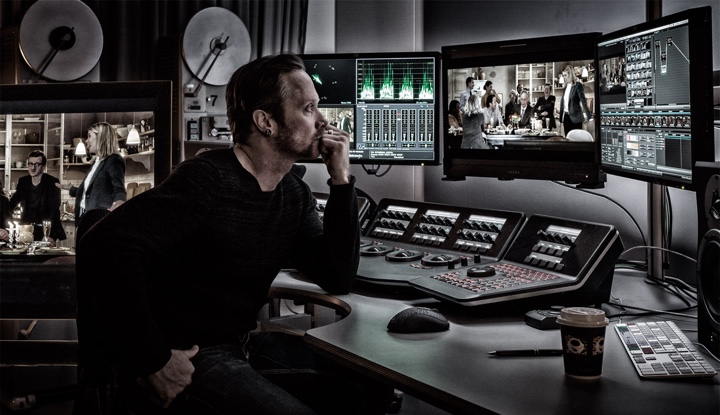
Kirill: How did you get into the field?
Norman: I stumbled onto it, really. At that time I didn’t even know colour grading existed as a field. I knew about editing but never thought of the colour grading part. I always thought that was for stills photography.
I was working for Multivisio Holdings – an audio-visual company in Jhb, South Africa, doing video productions for the car industry (helicopter shoots etc), as well as staging and engineering shows and car launches. It’s much like the show business and everything that comes with it. At some point the company bought the first component digital editing suite in the southern hemisphere and an URSA GOLD with a Pandora Pogle to go with. The American operators were great guys and they were eager to teach me.
I was in luck! I was editor’s assistant for 6 months then a Telecine assistant for 6 months. Then I had to choose as they were hiring, and I chose the film/colour grading world. I was always painting and drawing, spending school holidays at that company to mount slides from car shoots for multiple projector slide shows. I was always drawn not to photography specifically but image making, if I may call it that.
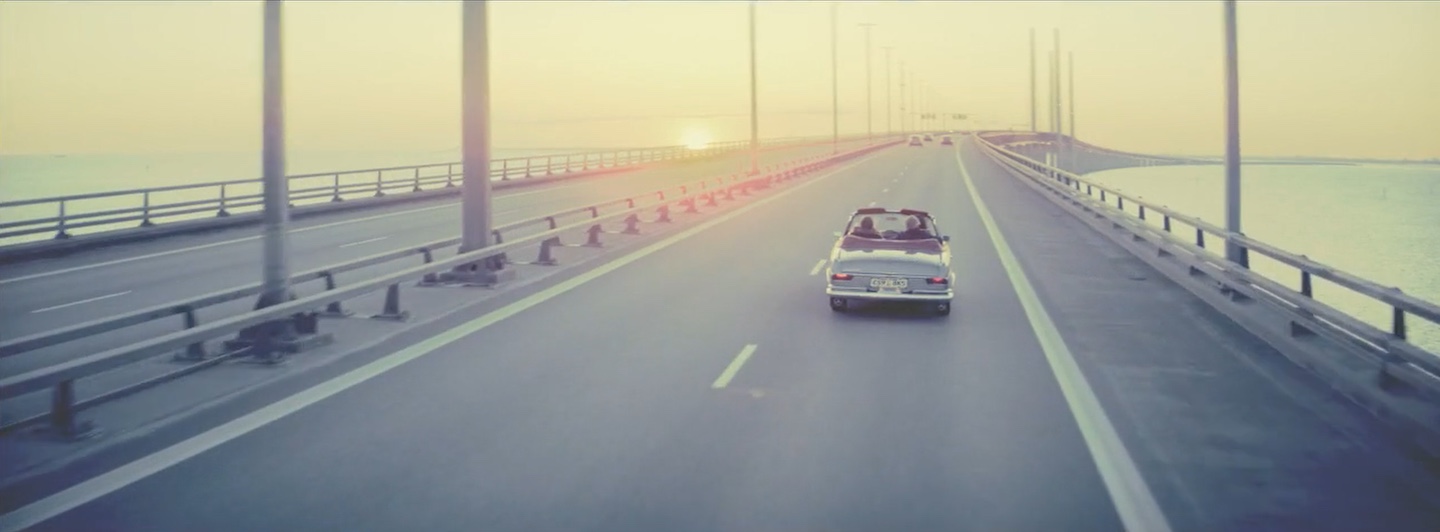
Norman Nisbet’s work on Mena Maria’s “F*#$ You”.
Kirill: What is color grading? What it is that a colorist does on a feature film or a TV show?
Norman: Colour grading is enhancing the raw image that was shot on film or digital media to present to an audience on different formats. It is the bridge between the camera and the screen. There is a technical translation aspect to it, as well as allowing for a creative side of the process. The cinematographer has a chance here to enhance the image for the audience to enjoy the intended vision of the film or program. Colour grading has replaced the ‘colour timing’ process that was previously done in a film laboratory.
The role of the colourist is to help enhance that image and to be the cinematographer’s ‘hands’ by understanding his vision and making sure the audience will see the program or film in the way the cinematographer intended it be viewed. The colourist has a responsibility to convey the cinematographer’s intent. Obviously we (colourists) give creative input and have the technical know-how to carry out this process.
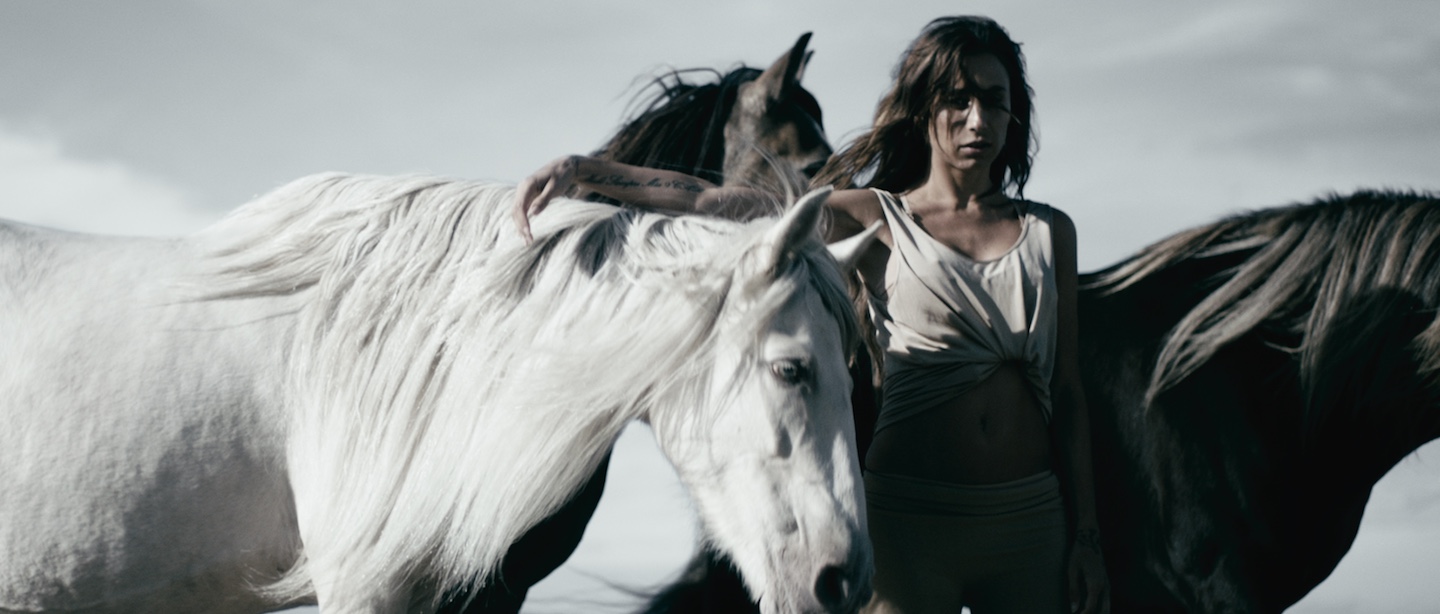
Norman Nisbet’s work on Medina’s “We Survive”.
Kirill: How do you describe what you do to people outside of the industry?
Norman: I describe it as photoshopping a moving image. Or nowadays as a ‘filter’ applied in Instagram. I enhance images to portray a mood to help the story. I create warmth or cold. Animosity or sincerity. A menacing darkness or a pastel universe. I carry the viewer through the scenery in a subliminal manner. I invoke feelings as the viewer watches the images. There is always the technical side too: matching scenes and shots as they are shot at different times or different lighting. Even making day time look like night time.
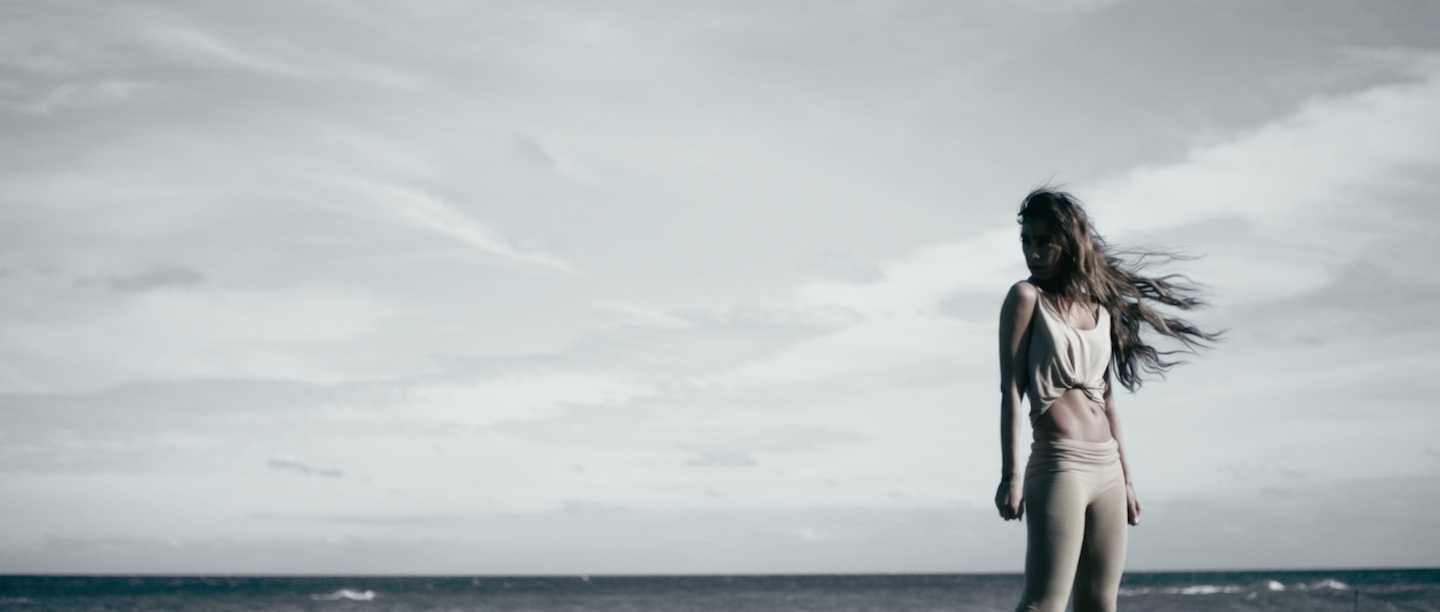
Norman Nisbet’s work on Medina’s “We Survive”.
Kirill: Is there such a thing as a universal “dictionary” of meanings to color choices to convey mood and emotion?
Norman: There are, of course, studies which show how a human body reacts to certain colours. Red raises the heartbeat, blue is calming. Mental triggers such as green symbolises growth but green is also jealousy and envy. So these colours can be challenges or to use as tools. Are nights blue?
Kirill: What are your thoughts on a much smaller color space on screens compared to real life?
Norman: Human eyes and the messages relayed to the brain are amazing! The amount of colour balancing that goes on in a split second! Looking at a smaller screen limits this spectrum. You cannot perceive the range of blacks so the picture is always more contrasty. In real life there is no true black or white, there are too many reflections bouncing around. You can almost touch colour if you look properly.
Any screen cannot truly show real life and the smaller the screen, the more distant the viewer – so a more contrasty picture will engage the viewer’s interest. Image compositions are clearer too. I feel it’s a pity that cinemas are losing popularity to home viewing or even on-the-go streaming for commuters, even though it is very convenient. There is still something to be said for the ‘cinematic experience’ as in ‘in a cinema!’
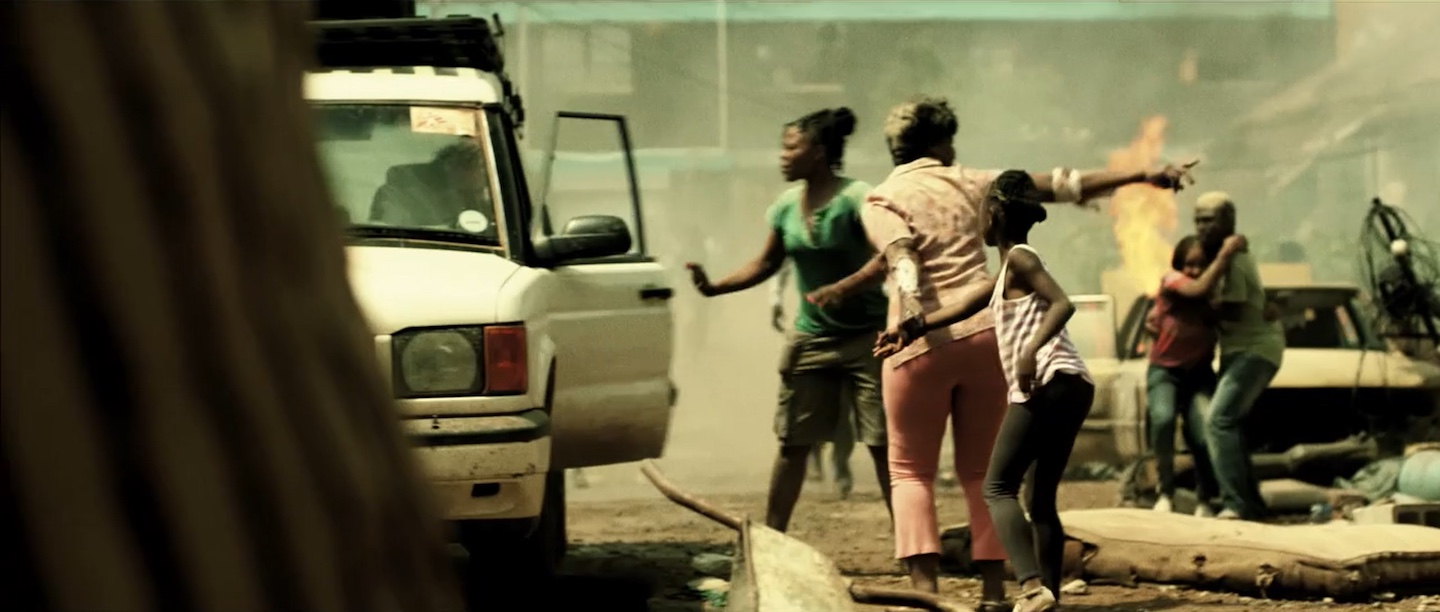
Norman Nisbet’s work on Doctors Without Borders.
Continue reading »
Continuing the ongoing series of interviews with creative artists working on various aspects of movie and TV productions, it is my delight to welcome Carmen Cabana. In this interview we talk about Carmen’s cinematography work on the second season of “Narcos”, being a part of the new digital generation, the art of telling stories with light, the ever evolving technological landscape of her field, the crazy pace of shooting for episodic television, collaborating with the other two cinematographers of the show, planning and executing elaborate action sequences, and working for the very first time in her home country of Colombia.
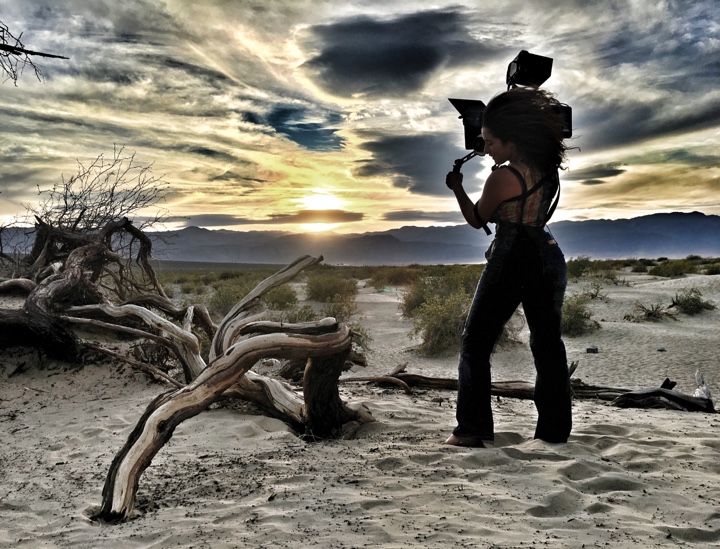
Kirill: Please tell us about yourself and how you started in the field.
Carmen: My name is Carmen Cabana, and what drew me into the industry was the passion for telling stories and not having a job behind a desk. I wanted to spend my life doing something that would change on a weekly basis, if possible. The film industry made sense for that.
Funny enough, I came to US to pursue writing, and the more I wrote, the more I realized how terrible I was at it. I have no talent for writing, but I have a natural talent for cinematography, lighting, camera, and composition. When I look back now, I find that in a sense I am telling stories by writing with light and images. I’m very happy with that. I’ve had an opportunity to work on several productions that involved different topics and countries, and people from different nationalities. That’s what I really wanted with my life – to be surrounded with people who would stimulate me, and who I would render service in return.
Kirill: Did you have a formal education to become a cinematographer?
Carmen: It was more of a transition into it. I went to the Art Institute of Los Angeles, but I only did a year and a half in associate’s program there. Most of the classes were oriented towards editing, screenwriting and directing. We had one cinematography class and it was very basic. We learned three point lighting, F stops, etc and with that I’d be lighting interviews for the rest of my life [laughs]. It was not enough of what I needed for cinematography.
In my second year at that school I did a documentary in Venezuela about a boy growing up in a neighborhood of gangs. I did everything on it – directed and shot the whole thing. People really appreciated it visually, and that’s what got me my first short films. After that I was blessed that somebody saw one of my shorts called “Miles”, and they liked it so much that they called me to work on a feature. That was “The Sinners”, and after that I did “Letters to Elena”, “The Border” and a bunch of others.
I did it backwards. I didn’t expect to be a cinematographer, but as people kept on hiring me and pushing me in that direction, I had to learn. I remember my first production “Miles”, reading “Masters of Light” book days before the shoot to figure things out. I also read “Reflections” which is a book of interviews with cinematographers, forcing my brain to understand how they think. How do you tell that story? How do they make the decisions that they make? Even now when I start on a project, I go back to written sources, like the American Cinematographer magazine or new books.
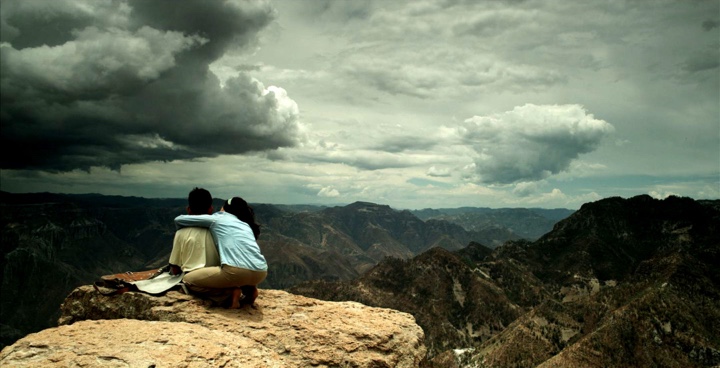
Carmen Cabana’s work on “Letters to Elena“
Kirill: Would you say that you’re a part of all-digital generation, or do you work with film as well?
Carmen: Unfortunately, I’m all digital. My school program was in motion picture and video production, but we never learned film. I’ve only shot Super 8. It’s harder to teach yourself to work with film. You’re talking about film stock and expensive chemical processes that are becoming less accessible. So it never happened.
I keep on hoping for a project where the client is going to demand film so that I will have to go that way. So far for me it’s been keeping up with the technology demands of the clients. I haven’t made the time to learn film, sadly.
Kirill: There are some advantages to digital camera. People can see what is captured on the attached monitors, and the equipment is lighter and more manageable, perhaps?
Carmen: I do work out quite a lot [laughs] so the camera weight is not a problem. It’s all about balance, even with the heavier cameras.
Sometimes I use a light meter, and sometimes I gauge light stops with my eye. I’m definitely spoiled by being used to the false color and histogram on digital cameras. You look at it and you know the range you’re in. It would be a learning curve. I’d have to at least understand the relationship between a particular film stock and how it is processed. Working with digital all the time, I know the sensors like the palm of my hand. I know different circumstances and how much I can push into post-production.
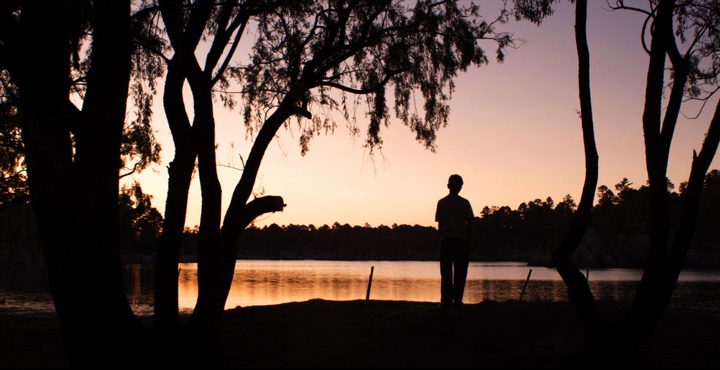
Carmen Cabana’s work on “Letters to Elena“
Continue reading »
Last month I’ve had the pleasure of talking with Joel Collins about the production design of the extraordinary “Black Mirror”. And today I am thrilled to have an opportunity to talk with Joel’s colleague at Painting Practice, the VFX art director Dan May. Dan’s portfolio is as wide and deep as the variety of positions he has explored over the years in the art department – from concept artist to matte painter to pre-vis artist to art director to, most recently, the crossover roles that bridge the worlds of physical and digital. In this interview we talk about the role of a VFX art director and where it fits in the ever-evolving world of art and technology of feature films and episodic TV productions, diving deeper into the intricate universe of “Black Mirror”.
 Kirill: Please tell us about how you started in the field.
Kirill: Please tell us about how you started in the field.
Dan: I’ve been quite lucky. My dad was an actor, and when I was at school I already knew I wanted to do something in set design. I used to go to theaters and see him play in musicals and other productions, and when I went backstage, set design was always magical for me. You could be in a mundane space on the outside, and then you go inside on a stage and there’s something amazing – a forest or a New York street. You walk behind it and there’s nothing, just plywood and people smoking. There was magic in that for me.
I pushed in that direction when I was at college. Originally I was going to do theater design, and I did my internship at the Royal Opera House making models. I had a really good tutor called Moira Tait who had lots of connections in the industry and a lot of her students become senior people in the industry that are often looking for new juniors and apprentices. I spent the first year of my career working on a list of people I’d like to work. Every Monday morning my job was to go down that list, find them and ask if I could come over to see what they were doing. Lots of people replied that they didn’t have time, but eventually you’d get lucky and they invite you to come over and show your work.
Eventually I got a few breaks and I started at the bottom of the art department, drawing things like windows and doors, going on set and doing the things that you do at the bottom of the ladder. You’re making tea, driving to get prints, helping to dress sets – there’s lots of things to do. And I enjoyed that.
I was always into the CG (computer graphics) side of things, and when I started out twenty years ago, it didn’t really exist. Some people in the art department were starting to use computers, but mainly it was in VFX (visual effects). I started using 3D modeling software early on, and a lot of people were freaked out by it. I did very early pre-vis on some set designs, helping the art department to calculate where the back windows go.
At that point I was getting quite a few jobs, and I was able to go around and see different designers. At that time Joel Collins was doing commercial and music video work. I went to show him my work, and he was really into it. He didn’t understand all of it, but he knew that the computer side of things was going to be good. We did a few smaller jobs together, and I continued to work on bigger feature films, doing 3D set design, drawing in the computer. As I was getting better at it, I worked with Joel quite a lot. We were doing much bigger productions at that point, working with people like David Slade, Hammer and Tongs and Traktor.
We started traveling around the world to places like South Africa and Prague, doing a lot of high-profile work. I’ve gained a lot of experience in set design, and at the same time I was quite keen to do VFX and post-production design. We were building our sets, but also designing matte paintings for post houses. That evolved and grew to the point about ten years ago when I said that it was what I needed to do. And if we wanted to do it well, we needed more equipment and more people to help us.
Back then we started getting into pre-vis which was in its early infancy. They’ve been doing a lot of it in US, but there was only one company doing it here in the UK somewhere in Soho. There was that gap in the market, so we started pre-vis. We kind of got lucky because nobody was doing it at that stage. I did pre-vis on “Quantum of Solace”, “Angels and Demons” and a couple of other big films. It was a fast learning curve because a lot of people didn’t understand what it was for. It frustrated people.
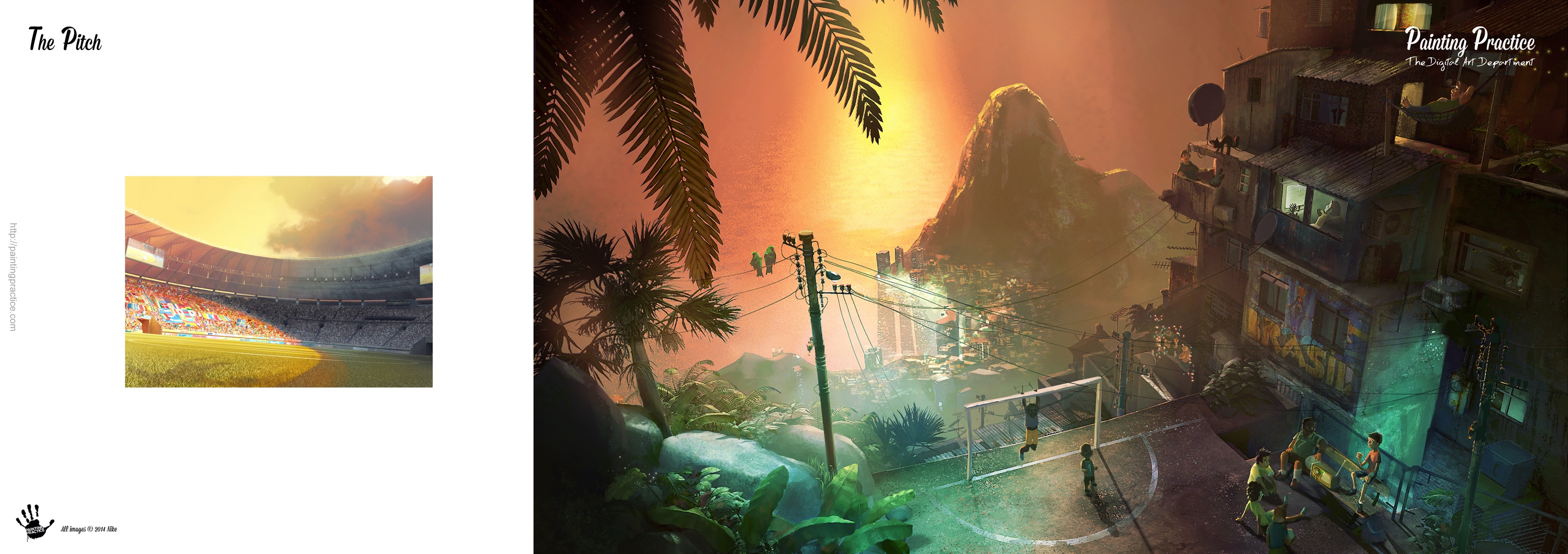
Concept design, matte painting and VFX work for a Nike commercial. Courtesy of Painting Practice.
Kirill: What kind of a frustration are we talking about?
Dan: It’s a tool that needs to be used right, and to be engaged with by all the department heads. Otherwise it costs a lot of money and doesn’t gain anything for anyone. Everyone needs to have time and energy to feed into it for it to be of any value. Otherwise you have people best-guessing what the director and the cinematographer and the production designer want to see.
But over time it has changed. People now understand what it’s for. It’s more productive and efficient, and that’s what I’m doing right now for my next production. Everyone is engaged, and it’s essential to the pipeline. We have people building sets and making shots, and it’s all working very fluidly.
That took us ten years of understanding what the company does, and understanding how the computer tools have evolved. The ethos of our company is about how the two worlds, that of the traditional art department and that of visual effects, are combined and how they work together in pre-production for the shoot to be better, as well as for post-production to be more efficient. If it works, the final product is more creative and better for it.
It’s still very much work in progress. People are changing the rules trying to figure out how it works. Who drives the pre-vis? When does the VFX start? There’s an enormous amount of VFX work on these big-budget productions these days. It might be something invisible that you don’t want the audience to be aware of – like set extensions for period films. You don’t want the audience to see that it’s CG. It’s part of the rollercoaster ride of going to see a film. You want to see beautiful shots and amazing things.
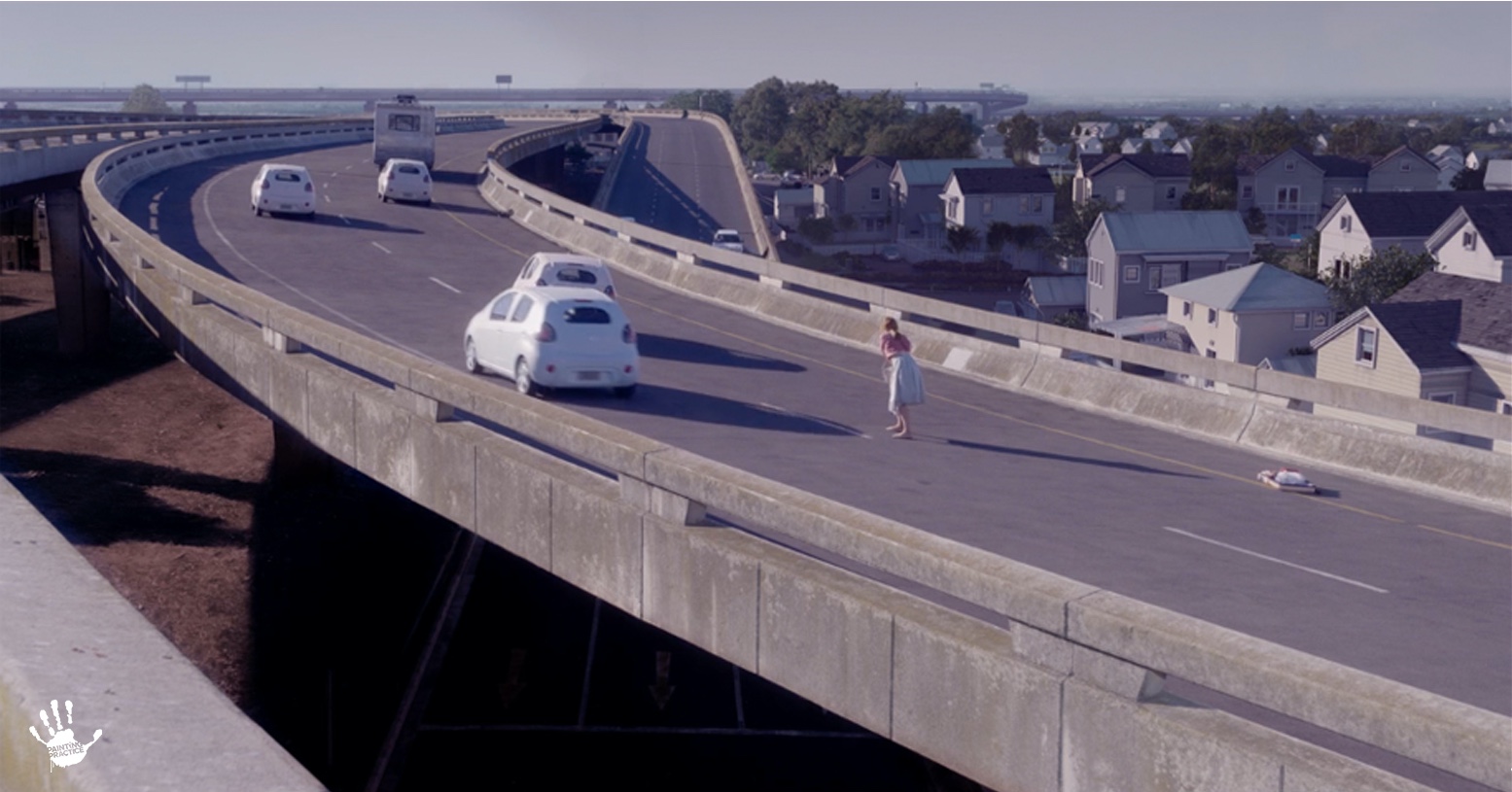
Matte painting for “Nosedive” episode from Season 3 of “Black Mirror”. Courtesy of Painting Practice.
“Black Mirror” fits in a different camp. VFX wants to be invisible and accepted as a part of that world. But at the same time, people are interested in us trying to predict what’s next. They want to see a less showy and a more realistic version of what the future might look like. I can’t talk for the creators or the producers of the show, but in general the opinion of VFX that Joel and I share is for the show to be pared down. It has to be believable and acceptable. I think that’s what people like about it. It feels like a very believable universe. It’s not too glitzy.
There have been moments in the third season which are more traditional VFX shots. They’ve been generated from scratch in CG, but they had to be completely photo-real. We didn’t want them to feel created in any shape or form.
That’s where we are at the moment. The company is a mixture of concept design, matte painting and motion graphics. We’re in this weird space between an art-based pre-production company and a VFX house. We do use fairly expensive bits of software and equipment to do what we do. It’s the same tools that a VFX house would use, but primarily for the design purposes. We have to create a place to house that, to have an office with the people that service that equipment. I suppose that by necessity we are a production company of art work and art creation that can service any point in the production process.
In the ideal world, like with “Black Mirror”, we service from the very beginning seed of the story all the way through to the very end. On most of the episodes of the third season it was myself, Justin Hutchinson-Chatburn or another freelancer Sean Mathiesen who VFX-supervised all the shots to the very end. I was also the VFX art director for Joel on most of the show, and Joel did the production design for all the episodes.
So we’ve started at the very beginning in terms of conceptualizing what the VFX would look like. And then it’s our responsibility, but not necessarily our job, to facilitate the look of those and get them signed off by Charlie, Annabel and the directors, so that everybody is happy with the final result. We wouldn’t necessarily do that through our company. It would be done with vendors like Framestore, Glassworks and Jellyfish.

Concept design, matte painting and VFX work for a Nike commercial. Courtesy of Painting Practice.
Continue reading »
Continuing the ongoing series of interviews with creative artists working on various aspects of movie and TV productions, it is my pleasure to welcome Bill Groom. His career in the art department spans four decades, and includes feature films such as “A League of Their Own”, “It Could Happen to You”, “Perfect Stranger”, “Milk” and “Eat Pray Love”. Most recently he worked as the production designer on HBO’s “Boardwalk Empire” that earned him four straight Emmy awards, as well as on the first (and unfortunately the only) season of “Vinyl”.
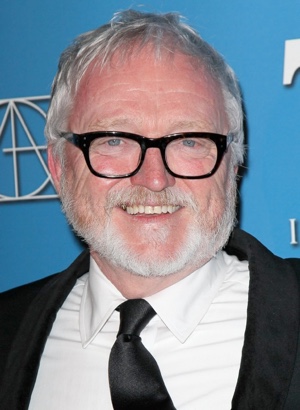 Kirill: Please tell us about yourself and how you started in the industry.
Kirill: Please tell us about yourself and how you started in the industry.
Bill: I went to graduate school at Tulane, New Orleans and then after that I taught for four years at the Stony Broke University in New York. When I was at school, I always imagined I would have a career in theater, and a friend of mine once told me that these careers are not linear. I think she was right about that. Some things present themselves along the way, you make choices and that leads to another choice. That is how it evolves.
When I was teaching, during the summers I worked with a friend of mine who had friends at Saturday Night Live. When there was a job opening there, she let me know, and I went there for an interview. That what started me on the path to television and movies. Eugene Lee was the designer on SNL at the time, and I assisted him. He also did a few made-for-TV movies for PBS, hiring me as his assistant. He ended up turning one of them over to me, and that’s how I got started.
I did several of those for PBS. The first one was “Life on the Mississippi”, and the last one was “Huckleberry Finn”. And I continued working on SNL as I was doing those, because those productions were mostly done during summertime, except for the last one which overlapped. I made a choice there and didn’t go back to SNL. I’ve worked on SNL for four years, and by the end of it I was 28 years old. I’ll be 66 next month, so that tells you how long SNL has been on [laughs]. I could’ve spent my entire career on that one show. But I’ve enjoyed the different things that I’ve done since then.
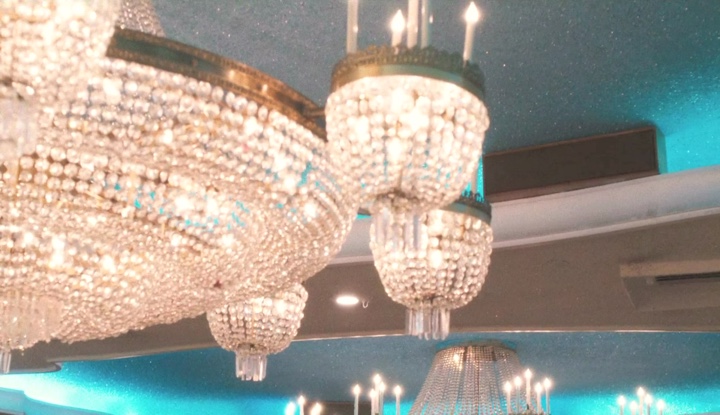
Kirill: And that’s when you moved into the world of feature film, doing art direction and production design.
Bill: First I designed several TV shows for PBS, and through a few director contacts that I’ve made I did a couple of network pilots. And at some point I’ve decided that to really quickly move into the feature world, I needed to get to know it a little bit. At the time, all those years ago, it was probably a bit more different from television than it is now.
I think that now some of the work in TV is more interesting than some of the work in features. It’s almost 40 years ago that I’ve started in TV. A friend of mine used to say that TV was broadcasting and not narrowcasting. That was 40 years ago, and now it’s pretty much narrowcasting. These shows have much smaller audiences than they did in the day when I was first doing TV.
It seems to me that TV is doing a lot more interesting work and taking more chances in some ways than features. There’s a lot of money riding on features, and that has an effect on choices that are made from the production standpoint.
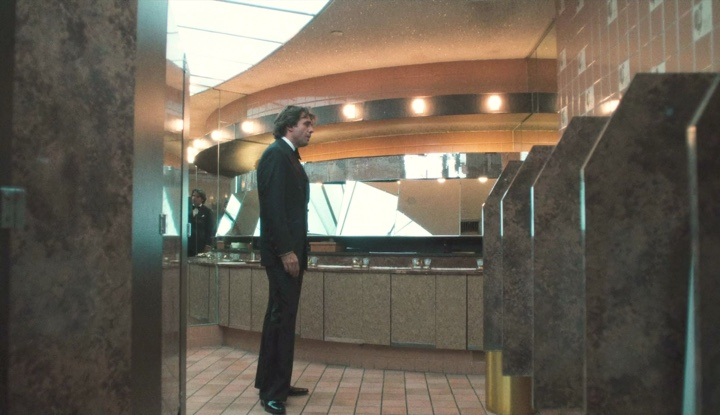
Kirill: And some TV shows attract a lot of talent that used to work exclusively in the feature world.
Bill: Partly it’s because of the work that is being done in television and what the premium cable networks are choosing to produce. I think that’s what draws the people who expected to have a career in features and weren’t that interested in TV five years ago.
I saw that happening. I was offered the job at the “Boardwalk Empire” at the same time as I was being frustrated with the feature project that was on and off for over a year. We would be on for a few months, and we’d be off, and then it would come up again. It was all about trying to make sense of it financially. I was pretty frustrated with it at that point, and they offered me “Boardwalk Empire” that was fifteen minutes from my front door. It was an easy choice [laughs].
I really like the people making the show, and the show itself. I took the job and haven’t done a feature since. Last year I did “Vinyl” and we had hopes for it to go on for a few years. They’ve announced the second season and then cancelled it. I had already moved on from it because Terry Winter left, and a lot of people who I knew and that were working on it left as well. I wanted to take this summer off and take care of some personal things.
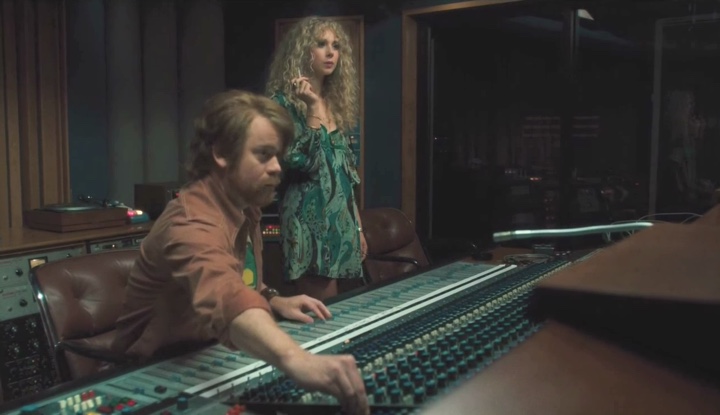
Unless a really interesting TV project comes along, I’ll probably think about going back into features for a while. I did a project in Canada that ended a month ago. It’s called “When We Rise” and all my old friends from “Milk” – Gus Van Sant and Dustin Lance Black among the rest – are involved with it. It’s a mini-series that will be in ABC in February. It’s about the history of the LGBT movement in San Francisco from about 1971 to 2015. It’s just a great team of people to work with, and I really enjoyed that.
When I first started it, they were OK with the idea of me going back to “Vinyl”, but I didn’t have to as it turns out. So I was able to stay with it until it was done. I’m really excited about it and I think we did a great job. It was one of the broadcast networks doing premium cable material, really. It was quite challenging because budgets are a bit lower than they are for HBO, Netflix, Amazon etc. Everybody worked very hard and I think we’ve produced a nice series.

Kirill: It feels to me that stories that were once told in mid-budget feature dramas are being told as episodic television these days.
Bill: That’s been happening for a while for the mid-level dramatic productions that I always thought would be the projects that I’d be doing when I started out in film. I did one action movie years ago. It actually wasn’t an action movie when we started [laughs], but it kept getting rewritten, and each time it got more action in it. I was offered other action movies after that, and it wasn’t just hand-crafted enough for me. It was too big, and I enjoy being a little more hands on with every department and every part of the art department.
It was “Money Train” and it was one art department in Los Angeles and one in New York, and more than a dozen set designers, and set decorators on both coasts. For its day it was a big-budget project. And I didn’t enjoy it as much as some of the more hand-crafted projects.
I think you’re right about TV being the place where mid-level interesting dramatic stories have settled. The production that I mentioned being frustrated about struggled because of that. It finally got off the ground – it was “Selma”. I was quite excited about doing it with Lee Daniels when he was directing it. By the time it was made, Lee had moved on to something else. It was the struggle to get it going, and it was about money, about not being able to make it for the number that they wanted to make it for then. I don’t know what the budget ended up being on that project.
That’s the struggle with the smaller indie projects. They are really hard to do. It’s a lot of work. You’re working for not quite enough money to pay your bills [laughs]. On some level you’re kind of subsidizing the project, and that works for some people.
I did a little movie called “Paper Man” with Jeff Daniels, and I loved the script. But at a certain point in your life when you have certain responsibilities, you can’t do those movies all the time. You can take a moment to do something you really like and not make your standard rate doing that, but you can’t always work for those projects at a certain point in your life.
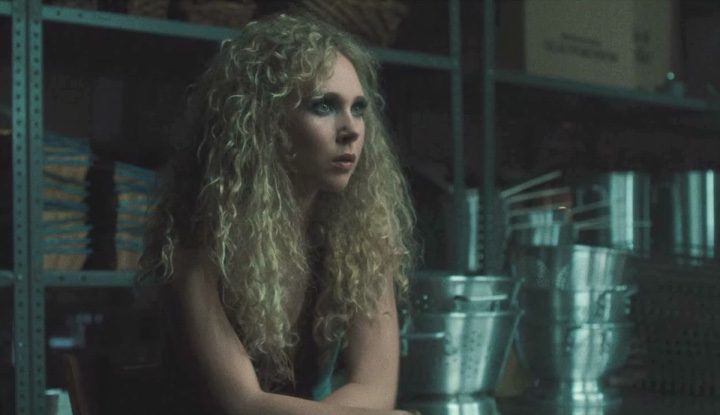
Continue reading »
![]()
![]()
![]()
![]()
![]()